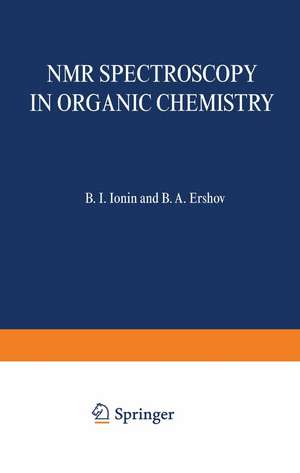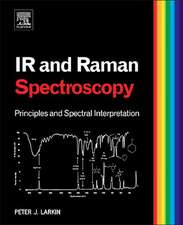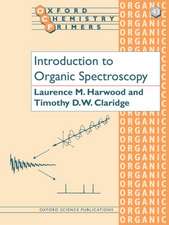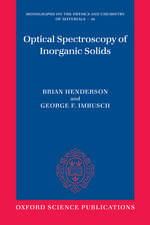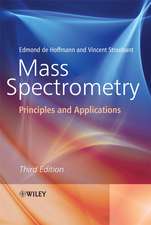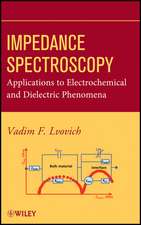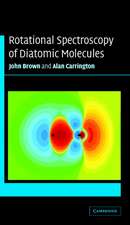NMR Spectroscopy in Organic Chemistry: Physical Methods in Organic Chemistry
Autor B. I. Ioninen Limba Engleză Paperback – 28 mar 2013
Preț: 393.35 lei
Nou
Puncte Express: 590
Preț estimativ în valută:
75.27€ • 77.65$ • 62.81£
75.27€ • 77.65$ • 62.81£
Carte tipărită la comandă
Livrare economică 26 martie-09 aprilie
Preluare comenzi: 021 569.72.76
Specificații
ISBN-13: 9781468417876
ISBN-10: 1468417878
Pagini: 404
Ilustrații: X, 382 p.
Dimensiuni: 152 x 229 x 21 mm
Greutate: 0.54 kg
Ediția:1970
Editura: Springer Us
Colecția Springer
Seria Physical Methods in Organic Chemistry
Locul publicării:New York, NY, United States
ISBN-10: 1468417878
Pagini: 404
Ilustrații: X, 382 p.
Dimensiuni: 152 x 229 x 21 mm
Greutate: 0.54 kg
Ediția:1970
Editura: Springer Us
Colecția Springer
Seria Physical Methods in Organic Chemistry
Locul publicării:New York, NY, United States
Public țintă
ResearchCuprins
I. The Fundamentals of NMR Spectroscopy.- 1. Magnetic properties of matter. Nuclear moments Nuclear resonance.- 2. Observation of nuclear magnetic resonance.- 3. Spin-lattice relaxation.- 4. Line width in NMR spectra.- 5. Saturation.- 6. Rate of sweep of spectrum.- 7. Main parameters of NMR spectra.- 8. Some features of high-resolution NMR spectra.- 9. High-resolution NMR spectrometers.- 10. Scope and limits of applicability of the NMR method.- 11. Indexing of NMR spectra.- 12. Manuals and textbooks on nuclear magnetic resonance.- Literature Cited.- II. Chemical Shift.- A. Proton Chemical Shifts.- 4. Molecular component of magnetic screening ?M.- B. Chemical Shifts of Nuclei of Other Magnetic Isotopes.- III. Spin — Spin Coupling.- 1. Spin—spin coupling between geminal protons.- 2. Spin—spin coupling between vicinal protons.- 3. Spin—spin coupling between remote protons (long-range coupling).- 4. H1 —C13 spin—spin coupling.- 5. Spin-spin coupling with the nucleus F19.- 6. Spin—spin coupling between fluorine nuclei Jff.- 7. Spin—spin coupling of protons and fluorine with magnetic nuclei of Group IV B elements.- 8. Spin—spin coupling involving P31 nuclei.- 9. Spin—spin coupling of protons and fluorine with other magnetic nuclei.- Literature Cited.- IV. Analysis of Complex Nuclear Magnetic Resonance Spectra.- A. Complete Analysis o f Spectra of Complex Systems of Nuclear Spins.- B Nuclear Magnetic Double Resonance.- V. NMR Spectra and the Structure of Organic Molecules.- 1. Saturated hydrocarbons with an open chain and their functional derivatives containing no protons directly attached to heteroatoms.- 3. Olefinic and Acetylenic Compounds.- 4. Aromatic hydrocarbons and heterocycles.- 5. NMR spectra of compounds with proton-containing functionalgroups.- 6. Compounds containing atoms of fluorine, phosphorus, and other magnetic nuclei.- Literature Cited.- VI. Application of NMR Spectroscopy in Various Fields of Organic Chemistry.- 1. Intermediate reaction products and complexes.- 2. Kinetics and mechanism of organic reactions.- 3. Kinetics of exchange processes.- 4. Tautomerism and valence isomerism.- 5. Compounds containing an unpaired electron.- Literature Cited.
